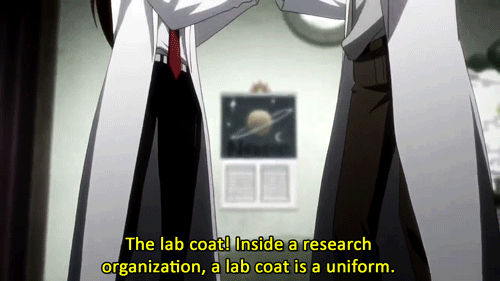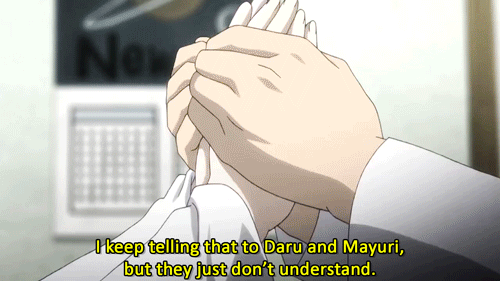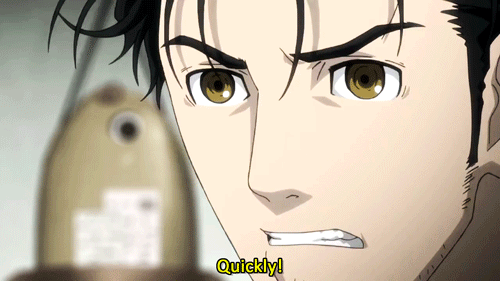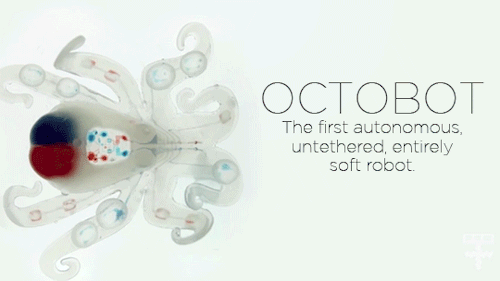In-pursuit-of-knowledge-blog - Everything Is Interesting!

More Posts from In-pursuit-of-knowledge-blog and Others
You only have to look at how cis hetero people try to interpret being transgender to see how history and anthropology inherently biased
“So they used to be female, but they’re now male”
“Sort of, but the thing is, he was never female. He was simply assigned the gender at birth but later recognized he was male.”
“But his records show he was female”
“I’m saying he’s never been female, he was just falsely identified as female”
“I don’t get it. So like, they used to be female but are now male biologically???”
“No… ugh, never mind, just understand they’re male”
They don’t get it because they don’t have context for it, so try to apply a context they understand. It’s not accurate, but it’s the kind of argument that becomes moot when they understand the most important details.
That’s what happens in history and anthropology as well.
There are existing concepts that colonial historians DO NOT HAVE ANY CONTEXT FOR and they will therefore attempt to apply their own context to those concepts, even if they are incorrect.
I use transgender people as an example because that’s one of the many concepts largely misunderstood by early colonial historians. They don’t GET the concept of a “third gender”or a “spiritual female”/ “Spiritual male” accepted as part of the community, they don’t understand that two genders are a concept THEY have that the community they study DOESN’T. They don’t understand that the language DOES NOT HAVE GENDERED PRONOUNS thereby eliminating hangups on gender that they themselves have.
Then they attempt to apply their own context – ie the context of a largely heterosexual, largely cis, and largely male community with pre-programmed ideas of what women are to them rather than what women are to the community they are studying. A society which, given English and other European languages, gender their pronouns in a way that isn’t done in other societies.
It’s the historical equivalent of 4Kids Dubs changing original Japanese names from anime into weird English names.
History and anthropology must be challenged CONSTANTLY by different outlooks less affected by white imperialist colonial mentality so that anything misunderstood in the past century or two can be remedied.
Like the fact that Viking women were warriors and buried as warriors, among other biased misinterpretations.
I think I’ve had both of these mindsets at different times










hi! this is very random, but i found your tumblr just now and decided just to go for it and ask you a question about studying anthropology. I am kinda new to the whole subject, but I am interested in social studies, linguistics and the whole process called evolution. I know that the subject is so so so much more, but perhaps you would like to tell me how did you know that it was THE THING you wanted to pursue and maybe what qualities should an anthropologist have?
Hi!! You’re not random at all. It’s always good to ask questions, and I’m happy to answer any that I can! (:
So, I think I need to start by saying that people can choose anthropology for SOOOOO many different reasons, because there are really endless things you can do with this subject (your interests are right on point though!). Personally, I originally was drawn to it because of forensic anthropology, and my love for bones, dead things, and solving mysteries. When I decided to study anthropology to go into forensics, my reason for doing so was because it was the one thing I’d studied that really…lit me up inside. Like, it felt like my neurons were firing at a million miles an hour whenever I was learning something about biological anthropology or forensics. As it turns out, I get that same feeling when studying cultural anthropology too. I ended up switching gears from forensic anthro to cultural anthropology because it is very important to me that what I do help people, and make a difference in the world. I felt like the best way to do that while still getting that ~crazy neuron party~ feeling was to study cultural anthropology and help people through my research. So…I guess the short answer to your question is that I knew it was THE THING because of how it made me feel, the way it woke up this intense curiosity in me. No other subject makes me want to devour it the way anthropology does, and I am a very curious person, so that’s saying something. It also is the perfect subject for a curious person, because you can have a bunch of different interests and somehow they all fall under the field of anthropology, so you aren’t limited by much.
As far as the qualities, it definitely depends on the subfield, but here are a couple I feel might be most important overall:
have an interest in studying SOMETHING about humans. anthropology is literally the study of humans so that’s number one.
be open-minded. part of studying anthropology is learning to see the world in a completely new way, and you have to be able to get out of your own head and away from your own biases to do that.
enjoy studying other cultures. no matter what you end up doing with anthropology, you’re going to need to value and enjoy learning about other people/cultures in order to be an anthropologist.
be ready for graduate school. i’m not saying you HAVE to go to grad school to be an anthropologist, but…to do most things in anthropology you’ll at least need a Master’s.
enjoy traveling. this depends on your subfield for sure, but a lot of anthropologists spend months or years at a time living in other cultures, or at dig sites, etc. because we are all about understanding things first hand.
I’m sure there are more, but those 5 seem like a good start. I hope this was helpful, and I definitely encourage you to keep looking into the field more! Don’t worry about exactly what you would want to do with it, just try to get an understanding of what anthropology is overall. If you’re in college, take a couple introductory courses that can also satisfy your gen eds. And I’m happy to answer any other questions you might have!
I could find uses for this! and it’s strange and really neat!!!
(does anyone have the source?)
Glass of Supervicious Fluid

X-ray binary (black hole devouring a star)
X-ray binaries are a class of binary stars that are luminous in X-rays. The X-rays are produced by matter falling from one component, called the donor (usually a relatively normal star), to the other component, called the accretor, which is very compact: a neutron star or black hole. The infalling matter releases gravitational potential energy, up to several tenths of its rest mass, as X-rays. (Hydrogen fusion releases only about 0.7 percent of rest mass.) The lifetime and the mass-transfer rate in an X-ray binary depends on the evolutionary status of the donor star, the mass ratio between the stellar components, and their orbital separation.
An estimated 1041 positrons escape per second from a typical low-mass X-ray binary.
source
animation
it is absolutely my kind of thing. so much work, such intricate pieces! I would’ve loved to be on the team that put this together.



Creepy or adorable? Researchers at Harvard University have demonstrated the first autonomous, untethered, entirely soft robot: the octobot.
Instead of being controlled by electronics, the robot’s logic board is powered by chemical reactions and fluid passing along tiny channels. Scientist have struggled to create completely soft robots because rigid components like circuit boards, power sources and electronic controls are difficult to replace.
Learn more about the octobot and soft robotics here and see the full study published in Nature here.
Videos Credit: Harvard SEAS/Image Credit Lori Sanders


Something for my dad from the nature trade - a piece of Precambrian-era petrified wood! I thought he would enjoy it and he does, it’s a truly lovely little piece.
Solar System: 10 Things to Know
Movie Night
Summer break is just around the corner. Hang a sheet from the clothesline in the backyard and fire up the projector for a NASA movie night.
1. Mars in a Minute

Back in the day, movies started with a cartoon. Learn the secrets of the Red Planet in these animated 60 second chunks.
2. Crash of the Titans

Watch two galaxies collide billions of years from now in this high-definition visualization.
3. Tour the Moon in 4K

Wait for the dark of the waning Moon next weekend to take in this 4K tour of our constant celestial companion.
4. Seven Years of the Sun

Watch graceful dances in the Sun’s atmosphere in this series of videos created by our 24/7 Sun-sentinel, the Solar Dynamic Observatory (SDO).
5. Light ‘Em Up

Crank up the volume and learn about NASA science for this short video about some of our science missions, featuring a track by Fall Out Boy.
6. Bennu’s Journey

Follow an asteroid from its humble origins to its upcoming encounter with our spacecraft in this stunning visualization.
7. Lunar Landing Practice
Join Apollo mission pilots as they fly—and even crash—during daring practice runs for landing on the Moon.
8. Earthrise

Join the crew of Apollo 8 as they become the first human beings to see the Earth rise over the surface of the Moon.
9. Musical Descent to Titan

Watch a musical, whimsical recreation of the 2005 Huygens probe descent to Titan, Saturn’s giant moon.
10. More Movies

Our Goddard Scientific Visualization Studio provides a steady stream of fresh videos for your summer viewing pleasure. Come back often and enjoy.
Read the full version of this article on the web HERE.
Make sure to follow us on Tumblr for your regular dose of space: http://nasa.tumblr.com.
-
 department0mysteries7576 liked this · 2 years ago
department0mysteries7576 liked this · 2 years ago -
 distorted-pup liked this · 5 years ago
distorted-pup liked this · 5 years ago -
 ssimsass liked this · 5 years ago
ssimsass liked this · 5 years ago -
 flonightingayle reblogged this · 5 years ago
flonightingayle reblogged this · 5 years ago -
 probably-a-magpie-in-disguise liked this · 5 years ago
probably-a-magpie-in-disguise liked this · 5 years ago -
 trying-my-best-2-b-good reblogged this · 5 years ago
trying-my-best-2-b-good reblogged this · 5 years ago -
 trying-my-best-2-b-good liked this · 5 years ago
trying-my-best-2-b-good liked this · 5 years ago -
 themythicalbwoahland liked this · 5 years ago
themythicalbwoahland liked this · 5 years ago -
 daydreamisallihave liked this · 5 years ago
daydreamisallihave liked this · 5 years ago -
 softly-sage reblogged this · 5 years ago
softly-sage reblogged this · 5 years ago -
 nyxtrum liked this · 5 years ago
nyxtrum liked this · 5 years ago -
 ableedingheartdove liked this · 5 years ago
ableedingheartdove liked this · 5 years ago -
 meandmydramaticass101-blog liked this · 5 years ago
meandmydramaticass101-blog liked this · 5 years ago -
 sendweebshit liked this · 5 years ago
sendweebshit liked this · 5 years ago -
 ld-666 liked this · 5 years ago
ld-666 liked this · 5 years ago -
 nightcrow712 liked this · 5 years ago
nightcrow712 liked this · 5 years ago -
 yamachdele-blog reblogged this · 5 years ago
yamachdele-blog reblogged this · 5 years ago -
 literaryreality liked this · 5 years ago
literaryreality liked this · 5 years ago -
 wingardium-leviohfuck reblogged this · 5 years ago
wingardium-leviohfuck reblogged this · 5 years ago -
 wingardium-leviohfuck liked this · 5 years ago
wingardium-leviohfuck liked this · 5 years ago -
 weno-mylove reblogged this · 5 years ago
weno-mylove reblogged this · 5 years ago -
 weno-mylove liked this · 5 years ago
weno-mylove liked this · 5 years ago -
 heydolmerrydol liked this · 5 years ago
heydolmerrydol liked this · 5 years ago -
 rosenneko liked this · 5 years ago
rosenneko liked this · 5 years ago -
 cringin reblogged this · 5 years ago
cringin reblogged this · 5 years ago -
 pathetically-biaswrecked liked this · 5 years ago
pathetically-biaswrecked liked this · 5 years ago -
 music-and-dance-is-my-life liked this · 6 years ago
music-and-dance-is-my-life liked this · 6 years ago -
 deziluzio-nat liked this · 6 years ago
deziluzio-nat liked this · 6 years ago -
 justfracturedfury reblogged this · 6 years ago
justfracturedfury reblogged this · 6 years ago -
 justfracturedfury liked this · 6 years ago
justfracturedfury liked this · 6 years ago -
 4sw-ng liked this · 6 years ago
4sw-ng liked this · 6 years ago -
 blackguru liked this · 6 years ago
blackguru liked this · 6 years ago -
 punkpinkpower reblogged this · 6 years ago
punkpinkpower reblogged this · 6 years ago -
 alice-fell-to-far liked this · 6 years ago
alice-fell-to-far liked this · 6 years ago -
 smol-mimi reblogged this · 6 years ago
smol-mimi reblogged this · 6 years ago -
 smol-mimi liked this · 6 years ago
smol-mimi liked this · 6 years ago
Once I was made of stardust. Now I am made of flesh and I can experience our agreed-upon reality and said reality is exciting and beautiful and terrifying and full of interesting things to compile on a blog! / 27 / ENTP / they-them / Divination Wizard / B.E.y.O.N.D. department of Research and Development / scientist / science enthusiast / [fantasyd20 character]
162 posts


